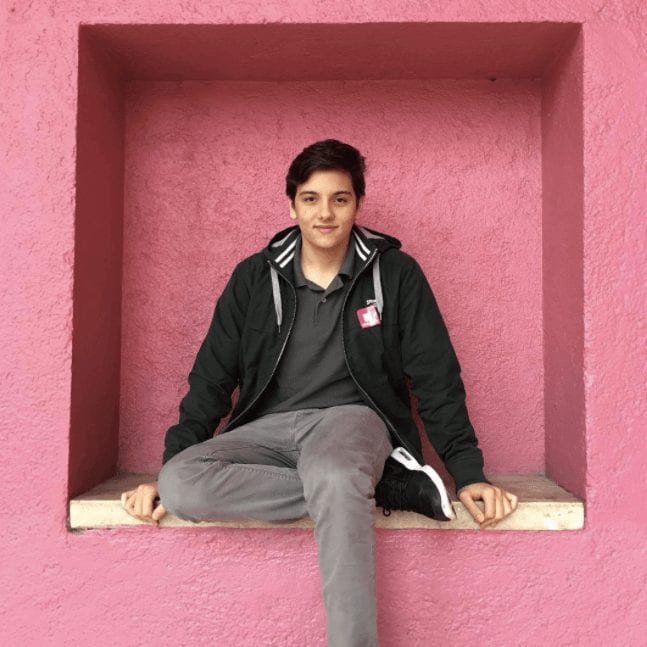Take a moment and think about this: Every single person is affected in some way or another by breast cancer. You may have battled the invasive disease yourself, or maybe you have a friend or family member who’s endured their own journey with breast cancer. There’s no escaping it—breast cancer touches the lives of everyone.
According to breastcancer.org, 1 in every 8 women in the U.S. alone will develop invasive breast cancer at some point in their lifetime.
Worldwide, more than 1.7 million cases are diagnosed each year, and an estimated 8.2 million deaths are at the hands of breast cancer annually.
It’s a battle that nearly took the life of Julian Rois Cantmu’s mother, and inspired the 17-year-old’s innovative detection system, EVA.
 Instagram
Instagram
When Julian was just 13-years old, his mom was diagnosed with breast cancer. She spent years battling the disease and undergoing treatments, which ultimately led to a double mastectomy.
“The diagnosis came too late,” Julian explains. “My mother lost both of her breasts and almost her life.”
It’s a lot to handle—watching your mom fight cancer. Julian believes that nobody should have to. So he set out to invent a product that would give the world a better way to detect the early signs of breast cancer.
Women are encouraged to do a breast self-exam at least once a month, but there are so many uncertainties when it comes to what you’re actually looking for. Most commonly, breast cancer presents itself in the form of “lumps” on a woman’s breast—but that “lump or no-lump” method is not the greatest way to rule out breast cancer.
Cancer can develop in other forms, and other places within the breast that would be easily overlooked without modern-day technology. My mom, for example, was diagnosed with breast cancer after an annual mammogram detected the disease in her milk-ducts—no lump ever surfaced.
Julian’s invention, EVA, is a game changer in this regard.
The “auto-exploration bra” is designed to be worn for one hour, once a week. While on the body, EVA’s 200 sensors map the surface of the wearer’s breast in search of things like: texture, temperature, body flow and color. Just like a fitbit or smart watch, EVA uses bluetooth to send the collected data to a computer or app for evaluation. The auto-exploration bra does the science, while the wearer is easily able to see what changes have happened in their breasts.

Higia.com
The 17-year-old is so confident in the need for his product, he even launched his own company—Higia Technologies—which aims to “boost women’s quality of life by attaining a professionalization of the self exploration method for the early and effective detection of breast cancer.”
Julian’s hope is that EVA would lead to better, more attainable early detection in every woman.
All the praise for this go-get-it teen who’s taking the horrible cards his mom was dealt, and turning them into aces for the now-generation.
